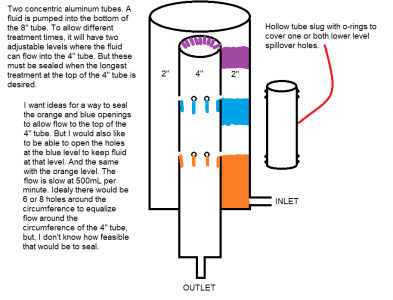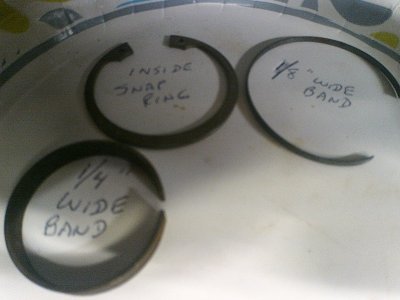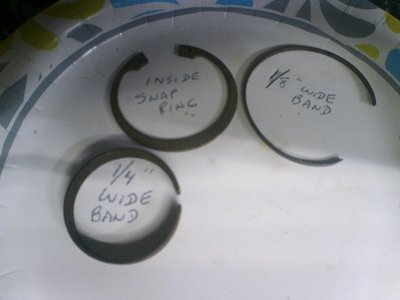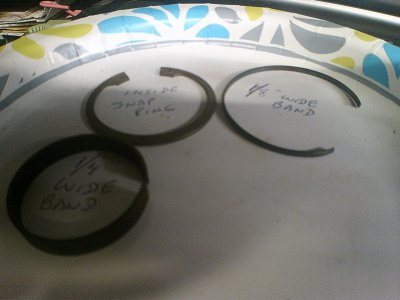I have two concentric aluminum tubes, a 4" and an 8". The 4" will have two sets of overflow holes, that I want to be able to shut off or open one or the other.
The drawing gives all the details. On the right I added one Idea I do have. Two additional bits of info, the two tubes are electrodes,
so must be continuous and insulated at the bottom and the temperature is 90*C.
I'm looking for other simple to implement ideas about how to close off or open these holes. It will be a somewhat rare event, but the over flow will need to be adjusted on occasion.
Thanks for your input, Mikek

The drawing gives all the details. On the right I added one Idea I do have. Two additional bits of info, the two tubes are electrodes,
so must be continuous and insulated at the bottom and the temperature is 90*C.
I'm looking for other simple to implement ideas about how to close off or open these holes. It will be a somewhat rare event, but the over flow will need to be adjusted on occasion.
Thanks for your input, Mikek





